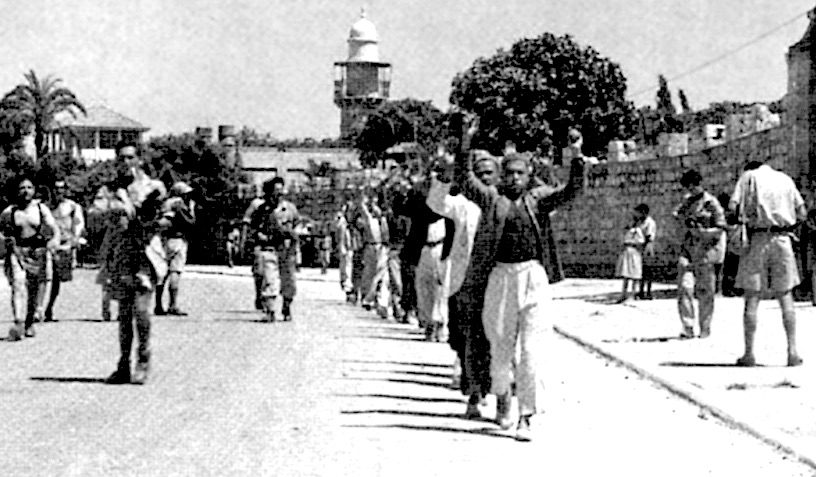The draconian circumstances faced by Arab-Israelis during the period of military rule were not instituted on the basis of security considerations or any real fear of an Arab uprising, but were part of a concerted plan to drive the minority from the land and to clear the way for Jewish settlement, a declassified secret supplementary to a government report has revealed.
The document, excerpts of which have been published by Haaretz, was part of a report by the Ratner Committee, a government committee established in late 1955 to examine the possibility of abolishing martial law in the Arab-majority territories of Israel.
Entitled "Security Settlement and the Land Question," the codicil discusses the provisions governing the estimated 156,000 Arabs who stayed behind in the territories which became part of Israel after the 1948 Arab-Israeli War (another 800,000 Arabs fled Israel during this period).
The secret supplementary, which characterised martial law as a tool in the struggle against Arab "trespassers", argued that in the long term, only Jewish settlement, dubbed "security settlement" in the document, could ensure the security of the nation's borders. Therefore, the document said, it was necessary to ensure the systematic Jewish settlement of the three Arab-majority zones in which military government was applied - the north, centre ('Triangle') and Negev areas.
Realizing that the settlement process would take time, and that Israel could not legally prevent Arab-Israelis from returning to their homes, the Ratner Committee argued that only the maintenance of martial law over these areas could ensure the continued "laxness" of the return of Arab citizens to their former homes.
Ultimately, the secret codicil recommended that
"until the stabilization of security settlement in the few reserve areas that can still be settled, it is essential to maintain the military government in these places and to strengthen its apparatus...so that the military government can ensure, directly and indirectly, that the lands are not lost to the state."The conclusions of the Ratner report would serve as government policy for years, and the formal abolition of military government over Arab-majority areas would not take place until 1966, when martial law was lifted and the government of Levi Eshkol began the process of equalizing the rights of Arab-Israelis with those of Jewish citizens. Less than one year later, Israel defeated an Arab coalition in the 1967 Six-Day War, and took control of new territories including the Sinai, Gaza, the West Bank, and the Golan Heights, which would spark new territorial conflicts, some of which continue to rage to this day.




Reader Comments
Because they are psychotic to think they are "chosen" to begin with?
If someone right now said GOD told them to command an army to kill all their neighbors and take their virgin daughters and property as spoils they would be put in a psych ward, or in prison for life if they did kill their neighbors.
So why is it that in this day and age that the Jews can get away with proudly claiming GOD chose them to kill everyone who would not submit, to steal their properties, and to consider non jews as lesser or equal to their livestock?
Additionally, why is it that if you do not support their Zionistic tyranny or help further their disgraceful farce that you are somehow morally corrupt? Accused of being racist?
These people relish in the fact they massacred others and continue to claim a divine right to whatever activities they feel like because they claim that GOD told their people to conquer the lands and peoples thousands of years ago.
In my mind this makes those ones whom would claim the "chosen" right batshit crazy and potentially zealously violent.
The even more devastatingly sad part to me is all the supposed Christians that blindly support the suffering caused by Zionism due to a fervent belief in an interpretation of the Bible prophecy that was prescribed to them. Christianity is about love, forgiveness,empathy, personal submission of your ego, and sacrifice to and for the humans around you.
Not submission to the Zionist movement.
The Zionist movement itself is anathema to the tenets of the New Testament.
SMFH.
John 4:21 Anyone who loves God must also love their brother and sister.
Luke 6.35 Love your enemies, do good to them, and lend to them without expecting to get anything back.
israel has chosen, chosen to violate God's Laws as well as the UN and International Law.
Who are/were the nazis again?
How can some pommy bastard gift someone elses sovereign country to some Mongolian's who claim to be the chosen ones because they took up a religion to save their own asses way back when